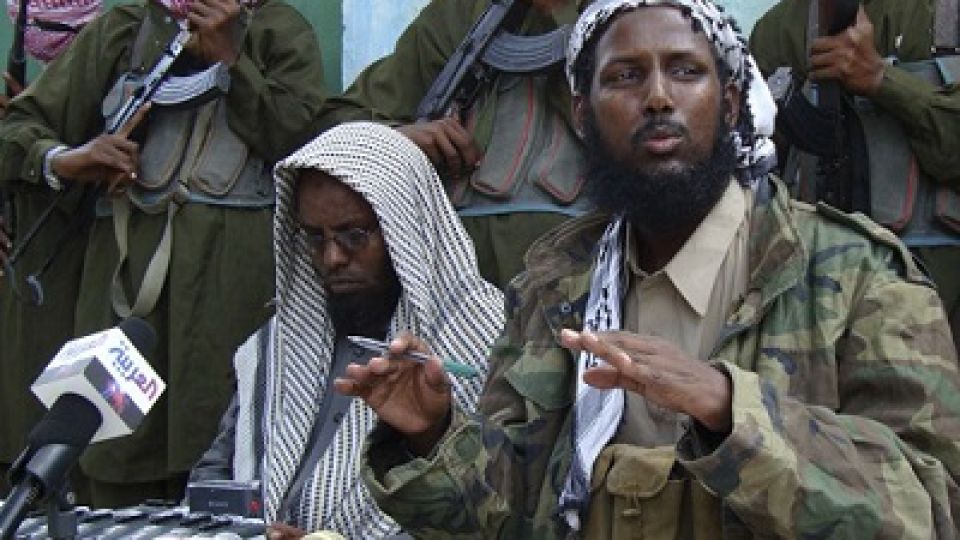from SAAD MUSE in Mogadishu, Somalia
Somalia Bureau
MOGADISHU, (CAJ News) – A YEAR after the launch of an operation to finally push the al-Shabaab out of Somalia, the campaign has degenerated into a shambles.
This is characterised by infighting in the government and both the administration and terror group enlisting the support of clan militias.
This chaos has greatly diminished the success of the campaign, codenamed Operation Black Lion, whose second phase the federal government launched only seven weeks ago.
The first phase of the counter-insurgency exercise was aimed at eliminating the Islamist group from central Somalia while government forces have captured some strongholds, the militants have moved to some remote areas in the region and closer to the border with Kenya, to the west.
During this first phase, the federal government of President Hassan Sheikh Mohamud relied on the support of several clan militias, including the Abgal, Habar Gedir, and Hawadle sub-clans.
The Armed Conflict Location and Event Data (ACLED) project believes the alliances with clans were critical to the government’s initial success in dislodging the militants from their strongholds in central Somalia.
But the government and clans have fallen out.
“The relationship between the federal government and some of the sub-clans involved in the operation – mainly the Hawadle – has since soured amid increasing political turmoil in the country, ultimately hampering the campaign’s success,” the think-tank noted.
The al-Shabaab has subsequently taken advantage of this deteriorating relationship to negotiate agreements with clan militias. Such agreements have been in the central states of Galmudug and Hirshabelle.
In return, the government has made efforts to enlist the support of the clan militias once again, months after seeking support from Djibouti, Ethiopia and Kenya.
The second phase of Operation Black Lion centres on the central Galgaduud and Middle Shabelle, to the south.
This has lurched into crisis.
In Galgaduud, the government mobilised the Hawiye clan militias to mobilise against al-Shabaab, which on its part has directed its efforts to mobilize another section of the Hawiye clan militias – mainly from Habar Gedir Mohamud Hirab, Murusade, and Abgaal Waceysle sub-clans – in Ceel Buur district.
The Hawiye clan is the largest Somali clan. It is divided in its support for al-Shabaab or the government.
A section of the tribe support the alliance with al-Shabaab as a way to defend their tribal land from those they see as a threat to Islamic Sharia law.
A similar situation is prevailing in the Middle Shabelle, where in some areas, clans remain divided in their support for al-Shabaab and the government. This is based on who controls the areas where each clan is prominent.
Security experts pointed out how in Galgaduud, al-Shabaab has improved relations with clan elders from Hawiye sub-clans than the government.
“In al-Shabaab-controlled areas, the militants rely on clan elders to help them with recruitment and the collection of zakat (or alms),” ACLED revealed.
The government is at a disadvantage.
As it mobilizes clan militias from specific sub-clans, the militants respond by entering into negotiations with those sub-clans and then imposing blockades to restrict the movement of trucks carrying goods in government-controlled areas to target the sub-clans’ prominent towns and force them to give in and cooperate.
Some sections of sub-clans are seen to be willing to enter into alliances with al-Shabaab to defend the Islamic Sharia law and defeat what they see as an “apostate” government.
This has rendered the clans unreliable partners to the government but vulnerable to the terror group.
Rivalries between political leaders are exacerbating the issue.
In June, President Hassan Sheikh Mohamud, in power since 2022, dismissed army chief, Maj-Gen Odowa Yusuf Rage, as Somalia faced a resurgence of Al-Shabaab attacks.
Brig. Gen. Ibrahim Sheikh Muhydin is the new commander.
That month, Hirshabelle State president Ali Abdullahi Hussein, sacked Hiiraan governor, Ali Jeyte Osman, over tax collection policies.
Osman has played a prominent role in mobilizing Hawadle clan militias to support Somali security forces.
He refused to relinquish his position and announced the secession of Hiiraan from Hirshabelle, supported by both federal and local lawmakers from Hiiraan.
This led to street chaos between factions of the Hawadle. In the Southwest, disputes between clan-based security forces over tax collection also turned violent in June.
A leadership wrangle is also hampering the fight against al-Shabaab in Galmudug.
This month of September, deputy vice president, Ali Dahir Eid, dismissed the state minister of interior, alleging incompetence and sabotaging the anti-terror fight.
State president, Ahmed Abdie Karie, revoked the move and reinstated the axed minister.
Amid the factionalism, arrangements with clans, featuring the government and al-Shabaab, as well as battles between security forces and the Islamist groups, blood is spilling.
ACLED revealed from 22 July to 8 September, it recorded nearly 375 political violence events and over 1 500 fatalities in the country.
Active since 2006, al-Shabaab initially gained infamy as it presented itself as a vehicle for the waging of armed resistance against the occupying Ethiopian army. It is still active in Kenya, for similar reasons.
On Sunday, the African Union (AU) expressed concern over the recent attacks by al-Shabaab, stating this underlined the reality that the group still remained a significant threat to peace and stability in Somalia.
AU is wary the al-Shabaab may exploit any gaps during or following the drawdown of the 3 000 African Union Transition Mission (ATMIS) troops if not done equitably.
ATMIS was established in 2022. The drawdown is to facilitate the gradual transfer of security responsibilities to the Somali Security Forces.
– CAJ News

